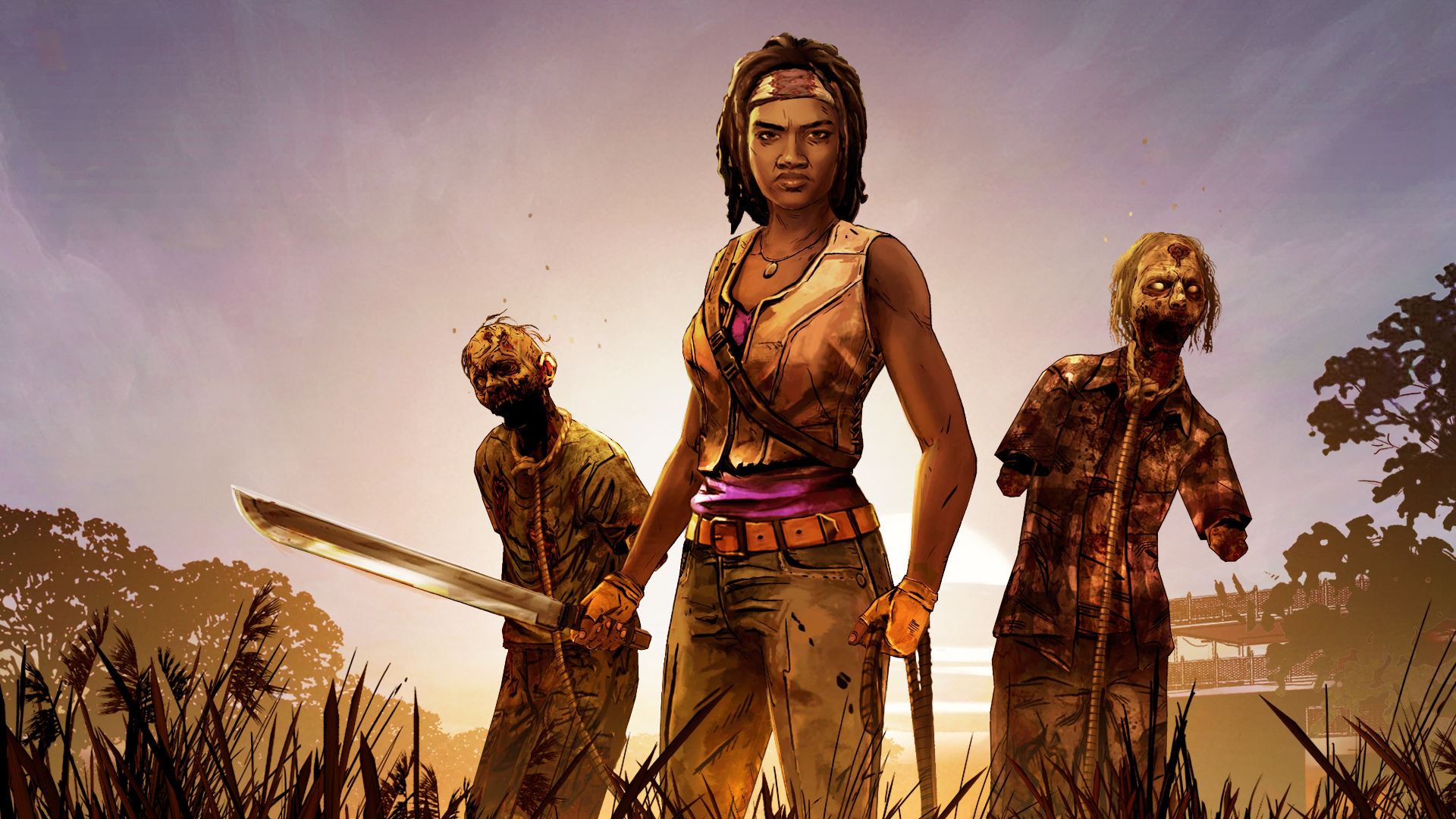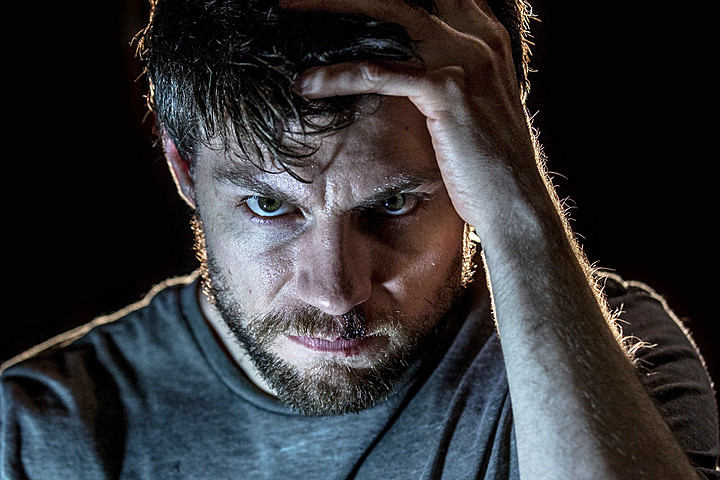The Walking Dead is one of the rare independently created intellectual properties that has succeeded across graphic novels, television, video games, and virtual reality (at least in demo form). The Walking Dead creator, Robert Kirkman, co-founded Skybound Entertainment with David Alpert, who serves as president of the transmedia company that has found success with The Walking Dead and Fear the Walking Dead.
The new Cinemax series, Outcast, is the latest comic book adaptation based on a Kirkman creation. The show debuted June 3, but Cinemax had already greenlit a second season of the demon-hunting series starring Patrick Fugit (Gone Girl) as Kyle Barnes.
Alpert talks to [a]listdaily about Outcast, the lessons learned from filming Gone in virtual reality with Samsung VR, and video games.
How did producing The Walking Dead and Fear the Walking Dead help with turning Skybound comic book Outcast into a show?
What we’ve really learned from both those shows is that having great character moments allows us to do some interesting horror moments. We have to lead with character and story first and foremost, and then we can always go from there into doing cool genre stuff. But whenever we lead with the genre stuff and then come with character later, that’s when we feel like we don’t connect with the audience.
In what ways, creatively speaking, did working with Cinemax enable you to push things further than other channels?
On the one hand, it’s not all that different because we’re still doing long-form narrative, we’re telling the story. We still structure the script in the same way. The biggest difference is that we got a chance to work with an amazing team over at Cinemax and HBO, and seeing the way that they approach certain things was really great for us. We weren’t like, “Oh great, we have to do something that’s more gory or more sexy,” although we do both of those things. We still let the story drive the narrative as much as possible, so from a nuts and bolts process, it really wasn’t that different. The biggest thing that was different for us was just the personalities and people involved. We got to work with some really amazing execs over there, but it wasn’t all that different on the day-to-day.
What are the challenges of keeping things consistently scary throughout the show?
That’s honestly a giant challenge for us because when you have someone in a movie theater, you know they’re locked in there in the dark. When someone is watching on TV you don’t know if they’re watching on their cell phone, you don’t know if they’re watching it in a dormitory, you don’t know if they’re watching it with the lights on or with a computer. You’re not exactly sure how you’re catching your viewer. So you have to really make sure that there’s a build and a mood that’s layered into your storytelling. What we try to do is make it out of a cohesive piece, where everything from the cinematography, to the score, the acting, and the writing are all building towards this one overall sense of mood. And that mood should hopefully be a slow pull that draws you into the story. And then, just when you’re lulled into a little bit of a relaxed state, that’s when we try to jump out and get you. Not from a “boo scare” perspective, but with a narrative twist that you don’t see coming.
What is the challenge of converting The Walking Dead audience into Outcast fans?
The biggest challenge is really just how successful The Walking Dead has been. Outcast—as far as the writing, acting, directing and all the technical performances that we have—is at the same level as we’ve done on The Walking Dead. And Outcast is a show that we’re truly proud of. With The Walking Dead, we really captured lightning in a bottle. When we came on the air nobody was doing serialized horror. No one really thought you could that on television. There had been shows that indulged in horrific moments for certain, but the idea of a serialized horror story just hadn’t really existed on television. We really felt like we captured something special, and obviously the ratings have been huge, so to become a cultural phenomenon is amazing.
Looking at it from Outcast’s perspective, it’s a much more crowded landscape with The Walking Dead, Fear The Walking Dead, and things like American Horror Story out there. The challenge for us is that people seem to really love The Walking Dead. We hope that they love Outcast the same. It’s a story that we’re incredibly proud of. Patrick Fugit is an actor that I’ve always wanted to work with. He’s done an amazing job in bringing Kyle Barnes to life. I really think that there’s something unique and special here, and we hope that audiences just give it a chance.
When it comes to The Walking Dead you have also had success in the video game market with Telltale Games and mobile games. What potential do you see for Outcast in gaming?
The thing that makes the Telltale game work so well, and the thing that works on our mobile game, is that we’re always driven by narrative. You always hope you get success. You always hope that it looks cool. You always hope that the music sounds great, but ultimately we’re a story-driven company and we want to tell great stories. We hope that they resonate with our audience, but the goal for us is to tell great and compelling stories. Everything we do with The Walking Dead—whether it’s the series we did for YouTube or virtual reality or gaming—we always try to come at it from a narrative storytelling perspective. Outcast is one of the best stories we’ve ever told, but it’s not like we went, “Oh, we did zombies, now let’s do demons.” It’s more like here’s a great story that happens to be set in this particular world.

Are there stories to be told in the video game space with Outcast?
The world of shooting zombies is an obvious one for video games, and there’s tons of different franchises that work there. Demons and possession are a little bit more internal, so it’s trying to figure out the way in which to externalize that for a game and to make it more active. That’s something we’re working on right now and trying to figure out what is the mechanic, and how does that work from a storytelling perspective. We’re really trying to work on that, but we don’t have anything yet ready to announce.
What do you see virtual reality opening up creatively for Skybound as storytellers?
One of the things that’s amazing about VR has just been the notion of full immersion, just the idea that this world is all around you has been exciting. I remember we did on Gone—as we do with every production that we do—we send in camera tests to the studio to show them what you’re thinking. The first camera test that we did on Gone, we were shooting in the Sequoia National Forest. We basically just put out the camera in the Sequoias and sent them footage, and we got a call from the studio—and you never get calls on the camera test—saying, “This is the best thing ever, just keep doing that.” I’m like, “Doing what? It’s just a camera test.” That was the power of VR because you put the goggles on and you’re transported to the Sequoias from the Samsung office in New Jersey. So just the idea that you can then tell stories in that medium is really exciting for us.
IMAX and Nokia are now in the VR space. How is all that technology impacting how you can tell stories in VR, especially since you had to create custom rigs to shoot Gone last year?
A lot of things that we were trying to accomplish when we shot Gone last year have now become a little bit more standardized. Even getting quick stitches done on your video is now possible. We had to wait a few hours before we could see what we had just shot, so you never knew if you actually got something. That said, the ambitions of what we want to be able to accomplish in the next shoot that we do are so much higher, so we’d want to be stitching in real-time. But we also want to be doing much more advanced camera moves and much more dynamic immersion, so hopefully we’d still be teetering on the razor’s edge of what’s possible inside technology because that was a big part of what made that a lot of fun.
HBO has been very active in the VR space with Game of Thrones shorts and other examples. Do you see an opportunity for Outcast in VR?
We would love to. Yeah, we’ve talked a lot about that. We haven’t settled on what that would be, or how we would do it. We’re about to start shooting the second season, which by the way as an aside, is pretty remarkable. It’s rare that you get a second season pick-up before you’ve aired your first episode. We took that as a big sign of confidence.
But, yes, we’re having a lot of ideas and conversations about what could we do from a perspective of shooting a unique piece of VR. And the conversations are about: Is it part of canon? Is it inside one of our stories? Is it using your main actors? Is it something like what we did with Fear the Walking Dead where you’re telling the airline flight story and then that intersects with the main story? Is it a standalone? We’re trying to figure out what narratively makes the most sense for our world.
Does heading into that second season open up a new scale and budget for you guys to explore?
Absolutely. Knowing that we have a second season gives us time to really figure that thing out.

